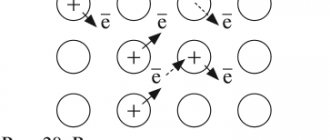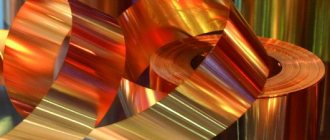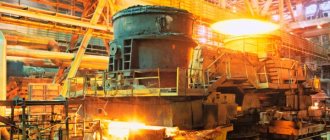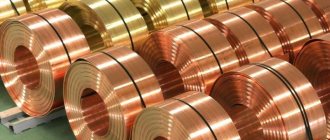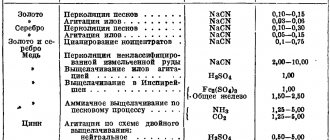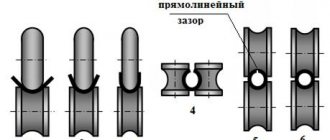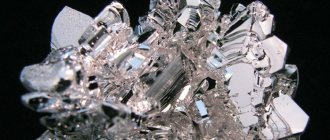The production of products by casting metal alloys is one of the oldest metalworking methods. In the historical literature, discussions continue to this day on the question of what methods of manufacturing metal objects a person mastered earlier - casting or forging, i.e. who appeared first - the foundry worker or the blacksmith. It should be noted, however, that pure metals in the earth’s crust were extremely rare even in those distant times. Their production is associated with the processing of ores, as a result of which the metals were obtained in liquid, molten form. They were poured into special molds, and after solidification, a casting or ingot was obtained. The casting is a finished product, and the ingot must also be subjected to plastic processing, such as forging. Thus, foundry processes generally precede any metalworking method.
Production of metals and alloys
Currently, almost all products made from metal alloys are produced from a cast, i.e., crystallized, from a liquid, alloy. The production of metals and alloys in a liquid, molten state is called pyrometallurgy. It is the main metallurgical process. In this regard, the foundry processes that occur during the production of a casting or ingot from liquid metal largely determine the quality characteristics of metal products and the operational properties of any machine from a car to a space rocket.
Injection molding technology
In this case, steps such as filling with alloy and forming castings are carried out under pressure. In the mass production of thin-walled products, technology has become indispensable. Pros:
- Greater dimensional accuracy of castings.
- High quality surface.
- No machining requirements.
This method can easily perform 200-400 cycles per hour. The molds are made of steel using injection molding. The use of permanent rods made of metal is typical. Compared to chill molds, the shapes and design here are more complex, so the cost also increases. Sand cores are too easily destroyed by metal blasts. Gas porosity forms because the gases do not have time to escape from the mold.
It is assumed that molds will be used - these are complex devices consisting of 30-=100 parts. With a working part made of special inserts. Metal rods are automatically inserted and removed to create holes in the casting.
The pressing chamber is filled with alloy. The mold cavity is filled with metal during this process. The casting is pushed out by pushers when the structure opens.
Injection molding machines are a type of complex technical installation. Here are just the main details:
- Frame.
- Guides.
- Hydraulic cylinders. The latter drive the halves of the mold and are responsible for the metal rods.
- The same cylinders create pressure to press the metal.
Low pressure is an intermediate option between processing under pressure and using chill molds. Electric heaters are used to melt metal in a hermetically sealed crucible. Through a steel metal pipeline, the main materials enter the mold. The gas pressure inside the crucible is removed after solidification, then the casting is removed.
Powder metallurgy
Currently, powder metallurgy is intensively developing, i.e. obtaining products by pressing and sintering metal powders. However, the main methods for producing powders are based on the crystallization of molten metal sprayed into various media (for example, water), i.e. Foundry processes also take place here. The main process in the formation of a casting or ingot is the solidification of the alloy, i.e., the transition of the alloy from a liquid to a solid state. Typically, two aspects of solidification are distinguished.
First aspect
The first aspect is thermal. As is known, melting a substance requires energy, which, when applied to a unit mass of a substance, is called the specific heat of fusion. During solidification, an equivalent amount of heat must be removed from the alloy. If a liquid metal at the crystallization temperature is placed in an ideal heat-insulating shell, then it will remain in liquid form indefinitely. The faster the heat is removed from the melt into the walls of the mold, the faster the alloy will harden. Therefore, the foundry worker must be able to control thermal processes during cooling and solidification of the casting and heating of the mold.
Second aspect
The second aspect is related to the formation of the crystalline structure of the casting, i.e. with crystallization. Solidification, as a rule, is accompanied by a phase transition from a liquid to a solid crystalline state. This transition is associated with the nucleation and growth of crystallization centers, which are called nuclei. The operational and physical properties of castings depend on the size and shape of the crystallites. The nucleation and growth of crystals are complex physical and chemical processes, which, according to Academician L.V. Shubnikov, can only be compared with the origin and development of biological organisms.
Crystal structure of the casting
The crystalline structure of the casting is largely determined by the structure and properties of the liquid alloy. Therefore, it is of great importance to control the liquid state of the alloy by changing its chemical composition, introducing various impurities, and using physical and mechanical influences (pressure, ultrasound, electromagnetic influences, irradiation with X-rays, gamma radiation, etc.).
Shrinkage processes
As you know, bodies expand when heated and contract when cooled. When solidifying, almost all metals reduce their volume. The exception is bismuth and gallium. The decrease in volume as the alloy cools and solidifies is called shrinkage. Shrinkage processes lead to the formation of various defects in castings in the form of shrinkage voids (cavities or pores). Due to thermal or mechanical inhibition of shrinkage, temporary or residual stresses arise in castings, reducing their strength, and sometimes leading to warping of the castings or the appearance of cracks in them. Issues of stress formation go far beyond the limits of purely foundry problems and are of great general scientific importance.
Filling the mold with alloy
Under the conditions of the Earth as a planetary formation, foundry processes are associated not only with the action of gravitational forces, but also with the influence of the gas atmosphere. Issues of dissolution of gases and their release from metal melts are an important section of foundry technology. During the preparation of the alloy, its casting and solidification, complex physical and chemical phenomena occur, accompanied by the dissolution of gases in liquid and solid metal, the formation of various products of the chemical interaction of gases with the components of the alloy (oxides, carbides, nitrides, etc.). During the process of pouring a mold with an alloy and the thermal interaction of the casting and the mold, gases can be captured by alloy flows, oxide films may appear, and gases may form in the volume of sand molds, leading to an increase in gas pressure in the mold cavity and in its walls. If you do not ensure compliance with the appropriate conditions imposed on the gas-dynamic regime of the molds, then gas defects in the form of cavities or pores appear in the castings. An increase in gas pressure when filling molds with high gas content and low gas permeability can even lead to the ejection of metal from the mold.
The most important process in foundry technology is filling the mold with an alloy. Therefore, a foundry engineer must be a specialist in the field of fluid mechanics, primarily the fluid mechanics of melts. It is necessary to be able to control the speed of movement of the metal in the mold and its channels, the structure of the flow, to ensure the capture of various non-metallic inclusions caught in the melt, as well as the smooth, shock-free movement of the melt in different parts of the mold cavity.
Theory of foundry processes
The theory of foundry processes includes a wide range of issues related to shaping, the formation of mechanical and technological properties of casting molds, and the interaction of the mold with the melt, which determines the quality of the surfaces of the resulting castings. The solution to these issues is based on the widespread use of modern achievements of physical and inorganic chemistry. We can talk about the development of a special field of chemistry—the chemistry of foundry molding materials.
The place of metal casting in history.
Dear friends, current and future clients of our company and just random visitors to our website! We are starting to publish a series of articles about casting - one of the main, most important and interesting technologies used to create a wide variety of products for many centuries to this day.
Articles on casting will touch upon the place of casting in history and modern industry, touch on the main casting methods used in modern souvenir and jewelry production, and give an idea of the process as such and what is necessary to obtain the expected results from it. All the main types of defects that arise during the casting process and ways to prevent them will be considered.
So, article one. PLACE OF METAL CASTING IN HISTORY.
Metallurgy is a field of science and technology that covers the processes of obtaining metals..., as well as processes associated with changes in the (chemical composition, structure and) properties of metal alloys.
Due to its relative availability for extraction from ore and its low melting point, copper is one of the first metals widely mastered by man. Mankind's acquaintance with copper dates back to an earlier era than with iron. Due to the fact that copper is a soft metal, copper in ancient times could not replace stone tools. Only when man learned to smelt copper and invented bronze (an alloy of copper and tin) did metal replace stone. The widespread use of copper began in the 4th millennium BC. e.
In ancient times, to process rock, it was heated over a fire and quickly cooled, and the rock cracked. Already under these conditions, restoration processes were possible. Subsequently, restoration was carried out in fires with a large amount of coal and with the injection of air through pipes and bellows. The fires were surrounded by walls that were gradually raised, which led to the creation of a shaft furnace. Later, reduction methods gave way to oxidative smelting of sulfide copper ores to produce intermediate products - matte (an alloy of sulfides), in which copper is concentrated, and slag (an alloy of oxides).
Copper has been used as an artistic material since the Copper Age (jewelry, sculpture, utensils, dishes).
Copper is one of the first metals that man began to use for technical purposes. The periods of use of copper and bronze marked entire eras of cultural development of mankind called the Copper Age and the Bronze Age.
The Copper Age is the transition period from the Neolithic to the Bronze Age. Metal products made of copper begin to appear for the first time, although stone tools continue to predominate. In the Middle East (in Southern Iran, Turkey, Mesopotamia), copper and then bronze products appeared in the 4th millennium BC. e., in Europe - in the 3rd-2nd millennium BC. e.
King Solomon's mines are copper.
Until people learned to use iron, non-ferrous metals and their alloys were the main material for the manufacture of weapons, tools, tools, household items and, of course, jewelry.
The main metallurgical technologies were foundries: the art of processing liquid metal made it possible to obtain unique bronze products and household items. It was during this era that things appeared that accompany a person in his daily existence, and tools that are symbols of the main technical professions. This time was called the Bronze Age.
The largest metal statue known in antiquity, the Colossus of Rhodes, was one of the seven wonders of the world.
The first copper smelters in Russia were created, apparently, in the 13th century. From documents it is known that back in 1213. The Tsilmen copper ore deposit was discovered near Arkhangelsk.
In 1479, a “cannon hut” already existed in Moscow and bronze cannons of various calibers were made.
In the 16th - 17th centuries, Russia experienced an acute need for metals and especially copper. “To search for copper ore,” Russian craftsmen went north, beyond the Volga, to the Urals. In 1652, the Kazan governor reported to the tsar: “Copper ores... a lot has been found and factories... we are starting copper work.” And they really turned it on. It is known that for 12 years, starting from 1652, “there were 4641 poods 6 hryvnias of pure copper sent from Kazan to Moscow.”
But there was still not enough metal. It is no coincidence that Lomonosov wrote that metals “...before the works of the Petrovs, almost all were obtained from the surrounding peoples, so that sometimes the enemies themselves were forced by need to repurchase them through other hands at a high price.”
Peter I did a lot for the development of Russian metallurgy. By the end of his reign (in 1724), in the Urals alone there were 11 smelting and 4 “remelting” furnaces that produced copper. Mining of non-ferrous metals also began in Altai. And in 1760 there were already more than 50 copper smelters in Russia. Annual copper smelting reached 180 thousand poods, or about 3 thousand tons. By the middle of the 19th century it had doubled. At this time, copper production was concentrated mainly in the Urals, the Caucasus and Kazakhstan.
Peter I more than once expressed the idea of the need to replace silver coins with copper ones. During his lifetime this transition was accomplished. In 1700, copper “money” appeared - 1/2 kopeck, “polushka” - 1/4 kopeck and “polupolushka” - 1/8 kopeck. The first copper penny was minted in 1704.
What metal can be called the locomotive of metallurgy? What role did women play in the development of metallurgy? What metal products were produced first? In the manufacture of what objects did the ancient craftsmen polish their skills and develop their professional skills? It turns out that for several thousand years the main driving force in the development of metallurgy was jewelry making. If we look at the history of metallurgy, it is easy to see that the rule is strictly followed, according to which advanced technologies are first introduced in jewelry, then improved in the military sphere, then household items and tools are mastered, and only lastly are used in construction.
The first metal products were jewelry, and the most “technological” metal for their manufacture was gold. It became the first metal that they learned to process by cold forging, soldering and polishing, from which they began to produce wire and cast products.
Gold was subjected to refining for the first time, and hydrometallurgy and metallothermal processing technologies were applied to it for the first time.
Ancient Egyptian and Sumerian texts often contain references to the types of gold used in ancient times. The difference was seen in its origin: “river”, “mountain”, “rocky”, “gold in stone”, as well as in color. The color of unrefined gold depends on its natural impurities - copper, silver, arsenic, tin, iron and others.
The technology for purifying gold from impurities was invented by the Sumerians at the beginning of the 3rd millennium BC. e. Its description is contained in the manuscripts of the library of the Assyrian king Ashurbanipal. According to this technology, gold was smelted along with lead, tin, salt and barley bran in special clay pots mixed with bone ash. The resulting slag was absorbed by the porous walls of the pot, and a purified alloy of gold and silver remained at its bottom. Thus, all impurities were removed from gold, except silver. One of the manuscripts in the library of Ashurbanipal contains a hymn to the fire god Gibil: “Oh, Gibil, you melt copper and lead, you purify gold and silver...”.
The development of metallurgy among all nations mainly followed the classical path: stone - copper - bronze - iron. So, casting itself, as a method of manufacturing various tools and jewelry, has been used since the discovery of native metals and, as a consequence, the advent of metallurgy. Namely, from the 6th millennium BC, that is, for more than 8 thousand years, since native copper began to be mined.
Author of the article: Ivan Skvortsov.
Founder and CEO of the production company 3D Avtozavod.
Welding
Welding of metal elements is a technology for firmly connecting them into a single structure. All welding methods are divided into 2 groups:
- Fusion welding - electric (arc or contact), using electric arc machines with electrodes or semi-automatic machines with filler wire. At the junction, the parts are heated to the melting temperature of the materials, their liquid phases mix and, after cooling, create a strong weld. To protect the welding area from oxidation, electrodes with special coating, welding with inert gas supply and submerged arc welding are used. This granular powder melts when heated and protects the welding area with the resulting film. After the metal processing process, the remaining slag is easily removed by grinding.
- Welding by plastic deformation, including cold welding - parts are compressed (with or without preliminary local heating) and a weld is formed. Heating is carried out by gas, electric current or other means.
Benefits of technology
Using the precision casting method to produce finished products has the following advantages:
- Production of castings of complex shapes with minimal allowances;
- Possibility of manufacturing finished products consisting of several parts to simplify production technology;
- Manufacturing of experimental and single devices, small series of products;
- Reducing the consumption of molding materials and material consumption, which affects the reduction of production costs.
To place an order for precision castings, please contact mechanical engineering consultants at the telephone numbers listed on the website.
Pressure machining methods
| Method | Peculiarities | Equipment used |
| Rolling | Used for the production of sheet metal and pipes, shafts, bushings, axles, sleeves, profiles. It can be longitudinal, transverse and transverse helical. | Rolling mill with rotating rolls. |
| Stamping – volumetric and sheet | Changing the shape and size of the workpiece under stamp pressure. Often used in relation to thin sheet metal. The sheet is placed between the matrix and the punch, bent and takes on the required shape. Stamping can be hot and cold, pulse and roll, separating and forming. Varieties of separation stamping are cutting, punching, cutting. Shaping operations of stamping include bending, forming, drawing, crimping and flanging. | Stamping press. Hydraulic or crank press. For cutting – guillotine shears, vibrating and disc machines. |
| Pressing | Extrusion of cold or heated metal on equipment with a replaceable matrix. The material, under the pressure of the press stamp, is extruded through a hole in the matrix and acquires the required shape, density and characteristics. | High pressure presses. |
| Drawing | Creation of products with a given cross-sectional shape. Shaped or round profile blanks are passed through holes of a smaller cross-section, becoming thinner and longer. This is how metal rods, profiles, pipes, and wire are produced. Drawing can be cold and hot, dry and wet, single and multiple, rough and finishing. | Drawing mills. |
| Forging | It involves heating certain areas of the workpiece and their mechanical deformation. The heated metal rod is deformed and takes on the required shape. The result is unique products with high aesthetic qualities. | In the manual method - a hammer, in modern production - a press. |
Machining methods by cutting
| Method | Peculiarities | Equipment used |
| Turning, turning work | The workpiece fixed in the spindle rotates at a certain speed, and the cutter installed in the support performs longitudinal and transverse movements. This is how bodies of rotation in the shape of a cone or cylinder, spiral and helical surfaces are processed. In addition to planing (cutting chips), turning operations include facing, cutting, chamfering, making grooves and processing fillets. | Lathe group machines. |
| Drilling | Making blind or through holes in workpieces of a given diameter and depth, including multifaceted holes. For drilling various metal products, drills made of high-speed steels, drills with hard alloys, borazon, and diamond are used. | Drilling group machines. |
| Countersinking | A type of semi-finishing of materials, in which cylindrical and conical holes in parts are brought to the required size, smoothness and accuracy class. It is performed using solid or mounted countersinks - multi-bladed tools with an axis of rotation. | Drilling and turning machines. Less commonly – boring, milling and aggregate. |
| Grinding | A technology of finishing and finishing metalworking, in which a thin layer of material is removed from the surface of parts. As a result, the products are brought to the required dimensions and a given level of roughness. | Grinding machines with abrasive wheels of different grain sizes, for non-ferrous metals - diamond tools. |
| Milling | It can be shaped, end, peripheral and end. A rotating cutter acts on a longitudinally moving workpiece and grinds out the necessary elements. The cutter moves in several directions and allows you to perform many operations. This is how profiles are milled, grooves, undercuts, keys, wells, cavities and holes are created, chamfers and threads are applied. | Milling machines with a variety of cutters. |
| Gear milling, gear cutting work | A type of blade metalworking, as a result of which involute profile gears are cut with high precision, excellent surface quality, uniform pitch and thread depth. This is how worm wheels, all kinds of parts with straight and oblique teeth, and cylindrical external gears are produced. | Gear hobbing machines with modular hobs. |
| Chiseling | A type of metalworking close to planing. The main tool, the cutter, performs reciprocating movements, giving the workpiece the required dimensions and shapes. It makes keyways, splines, and teeth. | Vertical slotting machines, planing machines, universal milling machines, vertical milling machines with slotting heads. |
Types of metal machining
Machining is the action on a workpiece with a milling cutter, drill, cutter or other tool to give it the specified dimensions. In this case, the internal structure of the metal or alloy remains unchanged. All types of machining are divided into 2 groups:
- Cutting operations are the removal of material allowances from a workpiece using the cutting tool of a metalworking machine. The type of mechanical processing of metal products depends on the characteristics of the surface being processed, the specified accuracy class, the dimensions of the part and the roughness values. Using cutting technology, long rolled ferrous and non-ferrous metals are processed.
- Impact of pressure or impact, as a result of which the workpiece undergoes plastic deformation and acquires the desired shape while maintaining integrity. Often the material is heated before applying pressure to reduce strength and hardness. Metal forming is used to improve the structure and physical and mechanical characteristics of a material, reduce its shrinkage porosity and chemical heterogeneity, and increase strength and elasticity. In our case, this is metal bending or metal stamping.

